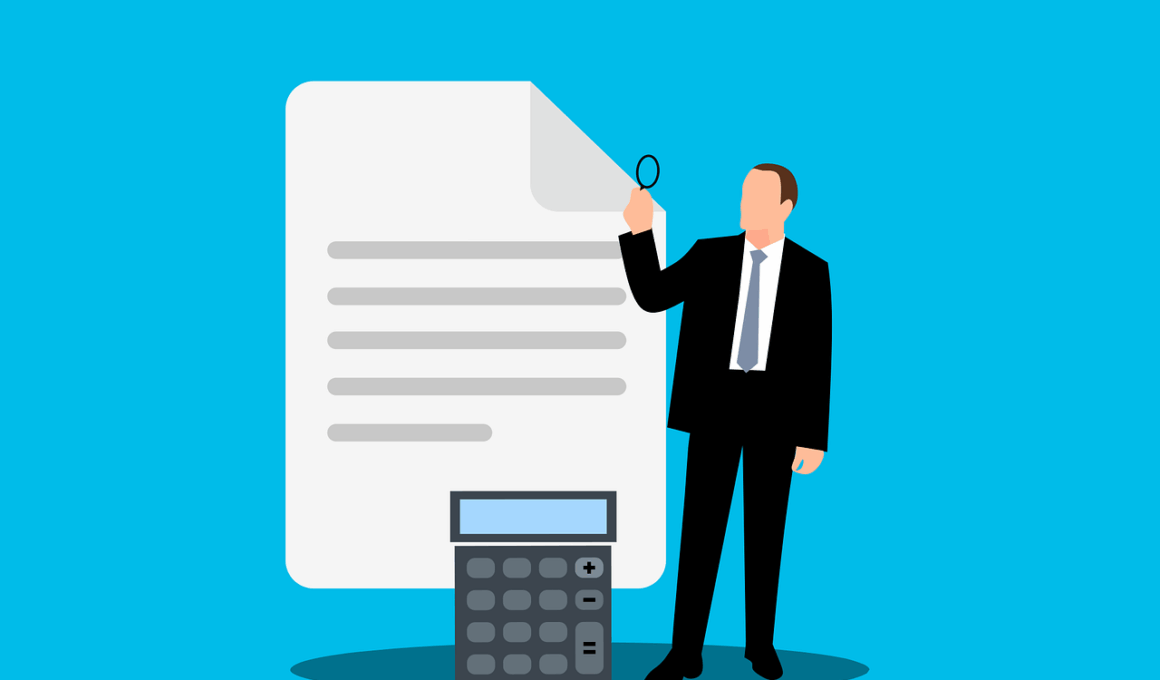Recording Depreciation in Accounting Software: Best Practices
When managing financial records, understanding the fundamentals of recording depreciation is vital for accurate accounting. Depreciation reflects an asset’s reduction in value over time, ensuring that financial statements present a true picture of the company’s worth. Utilizing accounting software efficiently can streamline this process, enabling seamless depreciation tracking. First, it is essential to categorize assets appropriately based on their types and useful lives. This categorization assists the accounting software in calculating the depreciation expense automatically. Furthermore, choosing the correct depreciation method, such as straight-line or declining balance, is crucial for accurate reporting. Each method impacts financial statements differently, thus necessitating an informed decision. Thorough documentation of asset acquisition costs, along with any modifications, is necessary as these figures will contribute to calculating depreciation. Accounting software typically provides features to input these details easily. Additionally, periodic reviews and adjustments can ensure that the recorded depreciation aligns with the asset’s current market value. Finally, regular training on the software ensures effective utilization, enabling accountants to keep up with the best practices in recording depreciation.
Understanding Depreciation Methods
Different methods of calculating depreciation can profoundly affect the financial overview of a business. The straight-line method, often favored for its simplicity, spreads an asset’s cost evenly over its useful life. This method is especially suitable for assets that experience uniform wear and tear. Conversely, the declining balance method accelerates depreciation, attributing a larger expense in the initial years. This approach is pertinent for assets that lose value quickly. Another method includes units of production, which applies depreciation based on actual usage, aligning expenses directly with revenue generation. Focusing on the right method is critical as it not only impacts financial statements but also tax obligations. Businesses should consider factors like liquidity and tax strategies when selecting a depreciation method. Accounting software often allows for flexibility in choosing these methods, ensuring that accountants maintain compliance with accounting standards. Regularly reassessing the chosen approach helps in adapting to the organizational changes and financial fluctuations. Furthermore, leveraging software solutions enables accountants to automate the calculations, ensuring accuracy and efficiency in tracking depreciation without extensive manual calculations.
Handling complex asset scenarios is another facet of depreciation that requires attention. Some assets may have residual values, influencing the overall depreciation calculation. It is essential to assess residual value realistically, based on market trends and future usability. Meanwhile, partial asset disposals can complicate the accounting process and necessitate a clear understanding of how to adjust depreciation accordingly. When an asset is sold or retires, the recorded depreciation must reflect those changes accurately. The software can provide detailed reports that help in identifying assets needing adjustments and ensuring compliance. Regular audits of asset listings and their statuses in the software are necessary for maintaining accuracy. Accountants should also ensure that they stay updated on any industry changes that might affect depreciation policies, especially regarding tax regulations. Collaborating with financial advisors can further strengthen the approach to asset management. Adoption of cloud-based accounting solutions can provide real-time data access, allowing teams to make informed decisions quickly. Consequently, effective asset management relies heavily on embracing technology and understanding complex accounting principles.
Maintaining Accurate Records
In accounting, maintaining accurate records for depreciation is of utmost importance. This involves diligent tracking of all assets, their acquisition dates, costs, and depreciation schedules. Regular reconciliation of these records with financial statements helps to identify discrepancies early. Using accounting software can significantly enhance record-keeping efficiency by automating periodic entries and calculations. Automatic updates based on new transactions can minimize human error and ensure the accuracy of reported financial figures. Additionally, accountants should establish clear protocols for entering and updating data, ensuring that everyone involved adheres to the same standards. Consistency strengthens the integrity of financial records. Documentation supporting the depreciation calculations, including invoices and purchase agreements, should be securely stored and easily accessible through the accounting system. Developing a well-structured filing system with clear categorizations can facilitate quick access during audits or reviews. Furthermore, training staff to understand the significance of accurate data entry and upkeep will create a culture of responsibility within the finance team. This collaborative effort promotes transparency and boosts the company’s credibility with stakeholders and auditors alike.
Regular audits of depreciation records are essential to ensure compliance with accounting standards and regulations. Auditing also serves as a checkpoint to confirm that the recorded data aligns with the actual asset utilization and market conditions. Scheduled assessments can identify any areas where discrepancies might occur and apply necessary corrections. For instance, changes in the usage or physical condition of an asset can impact its recorded depreciation. Keeping a routine of checking asset values can help companies stay ahead of potential issues related to asset overstatement or understatement. Additionally, clear documentation of any adjustments made during audits is vital for future reference. Software tools often include built-in audit trails that document changes path and rationale. This feature enhances the reliability of financial reporting and supports audit processes. Furthermore, engaging external auditors can provide an objective perspective on depreciation practices. Their insights can inform best practices and highlight areas of improvement. Collaborating with external experts not only reinforces internal controls but also aligns the company’s practices with industry standards.
Leveraging Technology in Accounting
The digital transformation has significantly influenced how depreciation is recorded and managed. Embracing accounting software enhances efficiency, allowing businesses to streamline their depreciation calculations. With features that automate entries and generate reports, accounting teams can focus on strategic financial planning rather than manual data entry. Moreover, leveraging cloud-based systems ensures that data is backed up and accessible from anywhere, facilitating remote work and collaborative efforts. This flexibility is particularly beneficial for organizations with distributed teams, as it enables real-time updates and visibility into financial standing from multiple locations. Features such as dashboards and analytics empower accountants to analyze depreciation trends and make informed decisions quickly. Additionally, integrating software with broader financial systems can offer insights across different business areas. Customizable solutions allow companies to tailor functionalities to their specific needs regarding depreciation tracking. Therefore, continuous adaptation to technology trends is crucial for maintaining an edge in the accounting landscape. Embracing these advancements not only improves operational efficiency but also positions businesses to react swiftly to changes in the financial environment.
Educating staff on best practices for recording depreciation is vital to ensure consistency and accuracy. Training programs that include hands-on sessions with the accounting software can enhance team skills effectively. Regularly updating training materials to incorporate the latest software developments keeps the team knowledgeable about available features and functionalities. In addition, creating a knowledge base or reference guide can provide staff easy access to essential processes and FAQs. Empowering employees to understand the implications of depreciation on financial reporting fosters a culture of diligence and accountability. Furthermore, encouraging dialogue about challenges faced while recording depreciation allows for collective problem-solving and innovation. This feedback loop can also highlight areas needing improvement or adaptation in the software used. Ultimately, effective communication across the finance team enhances the quality of decisions made regarding asset management and depreciation recording. Companies should also allocate resources for professional development through workshops, certifications, or seminars that further these skills. Investing in employee education not only promotes operational efficiency but also elevates the organization’s overall financial literacy.
In conclusion, mastering the principles of recording depreciation in accounting software is indispensable for accurate financial reporting. Applying the right methods, coupled with diligent record-keeping practices, ensures that businesses maintain their credibility. The integration of technology significantly enhances the efficiency of the depreciation process, empowering accountants to focus on strategic initiatives rather than manual calculations. Regular audits and staff training contribute to sustaining best practices over time, ensuring compliance with evolving regulations. It is advisable for companies to invest in ongoing education and resources that further their knowledge and skills. A proactive approach to documenting and reporting depreciation can ultimately streamline operations while enhancing transparency, fostering trust among stakeholders. Therefore, the best practices surrounding depreciation recording can support not only the accounting function but also the broader financial health of the organization. Keeping abreast of industry changes, engaging tech solutions, and nurturing a well-informed team will position businesses to tackle future challenges effectively. Recording depreciation is not merely a compliance requirement but a strategic financial management practice that can yield significant benefits in the long run.


